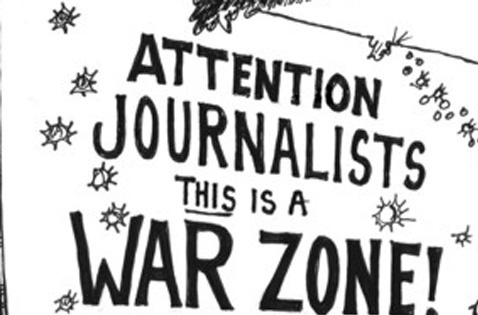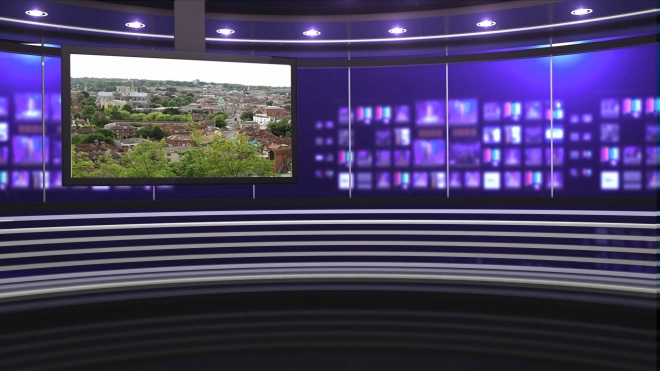
“God, newspapers have been making up stories forever. This kind of trifling and fooling around is not a function of the New Journalism.” – Tom Wolfe
A brief history of American Journalism:
First Wave of New Journalism-
Created in the UK but imported to America. Awful, elaborate style with drop intro’s. Trying to follow Tom Wolfe and write in feature style- this caught on. When the Penny papers where around in America (gold rush days, tell where shovel is, looks at local merchants & politicians). There to sell stuff or boast/criticize politicians. Didn’t worry about balance.
Reason for balance isn’t due to morality or ethics.
“Ethics is a place to the east on london where people wear white socks.“
Mid 19th Century objectivity became a factor in journalism because of the creation of wire services (true, fair news wires). Economically viable to have papers that are one sided. The Associated Press (AP) needed objectivity to be profitable. So must be bland so papers can interpret the stories as they like and therefore selling the stories to them.
The first New Journalism – The Yellow Press- late 19th Century. The world of William Randolph Hearst of the New York Journal VS Joseph Pulitzer of the New York World. Language skills were limited – so shortened words – cops etc. People wanted excitement-So they had huge, emotive headlines with big striking pictures -think the Sun on Sunday, Exclusives, dramatic real life stories, romantic stories, shocking stories, crime stories. This is Sensationalism!
Many called Yellow Journalism the New Journalism without a soul. All of the stories were about sin, sex and violence.
Next Wave-
America of 1960’s and 70’s- similar to time of Hearst and the Yellow Press. Great deal of political and social upheaval – fighting foreign wars, with even more serious military threats building overseas. Different ways of living- huge clash. 60’s was very rebellious and influx.
Before people like Tom Wolfe, Journalists recorded the events of the day – normally in a formulaic way. Five W’s- who, what, where, when, why? News Pyramid- all of these forms brought in to simplify writing news.
But The New Journalism was an attempt to record events mirroring the language and the style of the events. Remove self from real world- getting involved- talking to people- far from old removed version of Journalism. Should let reality bleed into the copy.
Political and Cultural scene
1960’s would of been a fun time to be around but was particularly turbulent – laws to pass- anti-segregation and women’s rights- great hope of JFK, destroyed with assignation in 1963. Disastrous war in Vietnam – controversy of the draft (forced to go to war) – Muhammed Ali refused to be conscripted “I ain’t got no quarrel with them Viet Cong”.
Demographic reasons and change – after WW2 there was a huge baby boom which created a powerful youth culture – baby boomers hitting their teens in the 1960’s. Huge clash between people who saw the way (defensive) and younger generation who wanted to experience life.
Sexual revolution led to sexual freedom: women liberated thanks to the pill, Reichian free love (let loose- have loads of sex). The student movement would have huge protests: worldwide protests of 1968. Civil rights, Black power- use of LSD (introduced by CIA) to access altered thinking of counterculture.
Prohibition of drugs created subcultures of Hippies, communes, collectives etc and established much of youth culture then.
Music was central for Sartre: Jazz was authentic. The music of 1960’s was a full frontal attack on the norms, drug fueled (Doors) and anti-establishment (Bob Dylan) – with the aim to subvert and be political.
Gil Scott Heron – The Revolution Will Not be Televised. The revolution will be live – the revolution will put you in the driving seat
Point is – Journalism is not changing despite all of this. Stuck to structures. People thought journalism should reflect the times and all this crazy stuff.
Influence of Existentialism
Ideas informed by Existentialism – Heidegger’s Authenticity, Sartre’s Bad Faith (uses example of assuming a role- pretend having a good time when not, pretend want to be a Tesco worker when you don’t- people will be insincere their whole lives due to these assumed roles). Existentialists think you a free and are not determined and have a huge choice, for example Fanon’s view of a path to freedom via accelerated choice -violence is essentially the extreme expression of choice – choice with real, immediate impact. WE ARE MADE UP OF OUR CHOICES – THE NEXT CHOICE YOU MAKE IS A RECREATION OF YOURSELF.
Anti-establishment feeling – “there is a policeman inside your head – he must be destroyed” – began to seep into journalism.
Journalists question whether basing stories on press releases, press conferences and official statements made by the establishment was really objective – and more importantly was it a true reflection of events? [Bad Faith] – But we do this all the time now.
New forms of journalism began to emerge. Started to use a new style.
Journalists began to focus on setting, plot, sounds, feelings, direct quotes and images, while still being as careful as before with facts. Truman Capote, Tom Wolfe and Norman Mailer are examples of this new breed.
This alternative journalism was personal and expressed an individual point of view. It was also unconventional, disagreeable, disruptive, unfriendly and anti-power structure. The journalist expressed a point of view and included the journalist in it almost.
Shift in form of narration from Diegetic to Mimetic
“Telling” to “Seeing” – In traditional news writing its all about telling the story – defining what the story is about – not giving the reader much choice to see what its all about. Now every needs pictures, sounds, sharp detail and description, then the audience has choice.
In New Journalism Subjectivity (experience) is better than “Objectivity” [authority’s message]
Hot will tell you what to think, Cool gives facts and lays it out and lets you make your mind up. [Marshall McLuhan Hot and Cool media]
Most famous example – Tom Wolfe. Wolfe was a huge fan of Emile Zola – one of the greatest writers of natural realism. “Zola crowned himself as the first scientific novelist, a “naturalist” to use his term, studying the human fauna.” according to Wolfe.
When Wolfe enters into journalism the first thing he notices is the status competition.
Almost like an investigator – you look into what he wears, how he speaks etc as this can show you a persons character.
“What inna namea Christ is this”’ – The Features game was changing
New articles with real, intimate dialogue- Reporter needs to be there to see it, to collect the data first hand. New Journalism- Hunter S Thompson called it Gonzo Journalism. BE INVOLVED. Capture accurate details. Thinks should look at what people are really interested in – different- Asked Obama about football.
Once there, it is only a small step to becoming involved – another character in the scene.
To get this sort of material, you needed to invest a lot of time in the subjects – days, weeks and years. “Use the whole scene, extended dialogue, point of view and interior monologue.”
New Journalism- Tom Wolfe: pg 46 & 47 – Read these as these are two most important pages about features you will ever read.
The journalists embraced social realism. Learned the techniques of realism from Balzac, Zola, Dickens etc.
This power derived from four devices:
- Scene by Scene construction- telling the story in scenes and not in a sheer “historical narrative”. Journalists needed to be at the event to witness it.
- “Realistic dialogue involves the reader more completely than any other single device – it also defines character more quickly and effectively than any other single device.”
- Third person point of view “giving the reader the feeling of being inside the character’s mind”. Need to interview subject about his thoughts and emotions, along with everything else.
- The fourth device is the recording of everyday gestures, habits, manners, customs, styles of furniture, modes of behaviour towards children, superiors, inferiors and other symbolic detail that might exist within a scene. Symbolic of peoples’ status life.
Ultimate New Journalism piece is FEAR AND LOATHING.
Gonzo- fly on the wall, shaky footage, authentic.











